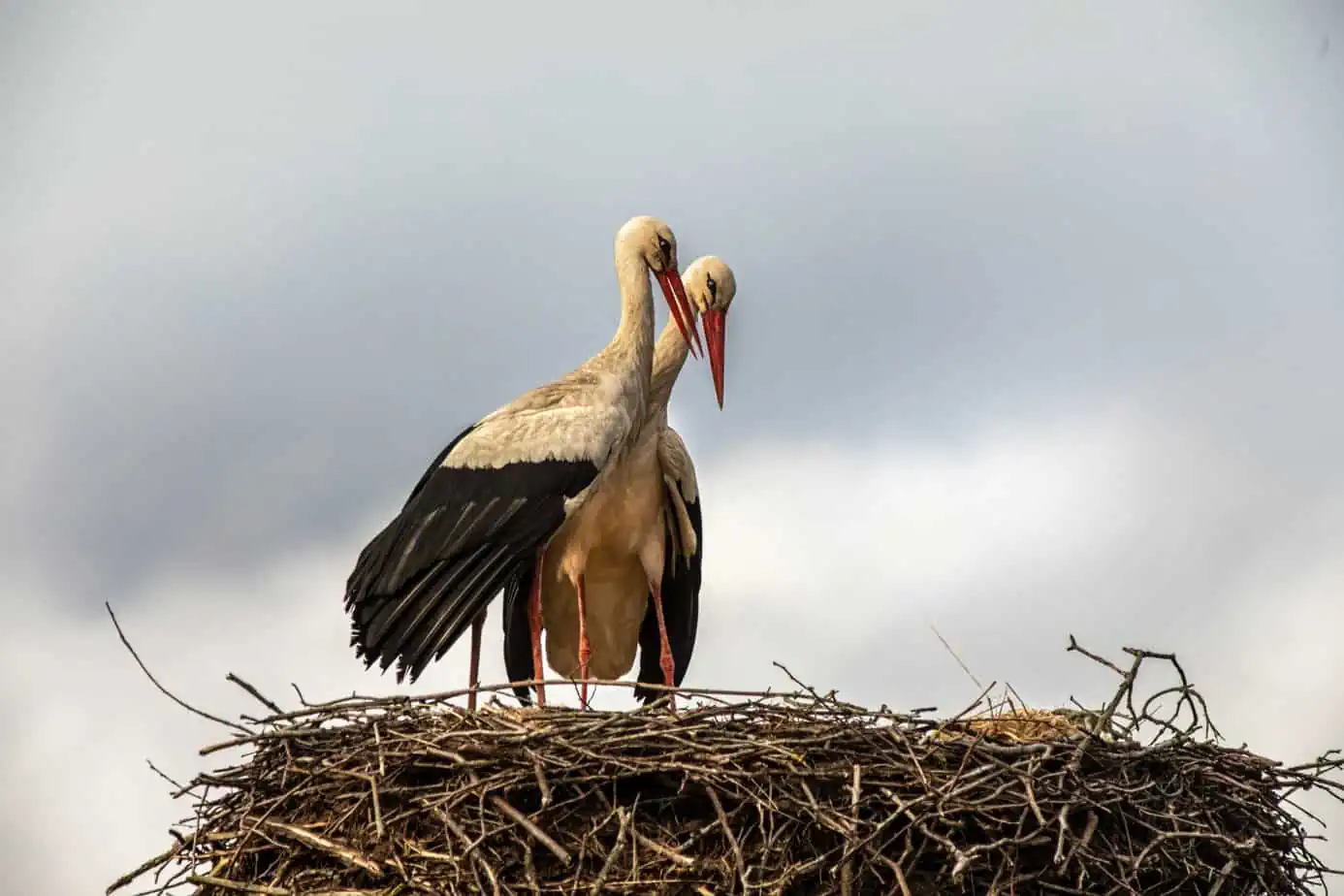White stork appreciates golf course as habitat
They are back: Since mid-February, the white storks have been on the move again from their winter quarters in the south to their summer quarters, including in northern Germany. Their winter journeys are also intensively observed in Schleswig-Holstein by numerous ornithologists, and their population is precisely recorded. In Dithmarschen, for example, the stork father discovered the first storks of the year as early as February. That storks are under such scrutiny is no wonder: the population of white storks is not abundant. In Schleswig-Holstein, NABU identified a total of 428 pairs in 2022, after the number had already dropped to around 200 pairs in the meantime. The annual number of young birds is not sufficient to fill the gaps caused by natural losses.
Golf course offers a lot of food
Golf courses can play a positive role in the establishment and reproduction of white storks, especially if they have extensive water features or floodplains. These areas ensure that the stork finds plenty of food and establishes its hunting ground on the golf course. The successful settlement of storks thus depends to a large extent on a high level of biodiversity on the golf course. This is by no means just about the frog, which can often be seen in the mouths of storks when they are shown in pictures. The stork appreciates earthworms, insects and small mice as well as carrion as a snack.
How local storks are, can be observed at some golf courses in the Golf Association Schleswig-Holstein. At GC Großensee, for example, where a stork nest was installed near the driving range at great expense in 2019, a pair of storks moved into the nest immediately in the first year. 2022 was the first time a cub was raised. This is not surprising: while in large parts of Germany wetlands and meadows are drained and landscaped areas are colonized, here there are numerous wetlands that serve as a natural habitat for storks.
Nevertheless, the storks at GC Großensee, which is certified gold in the Golf & Nature program, also made for an almost tragic story last year. One of the adults was hit by a golf ball during an outing on fairway 2 and has been unable to fly since. He is now being cared for at a stork station near the golf course. Because this meant that one of the parents was out for foraging, the other stork pushed a young bird out of the nest. Only the second young stork survived; according to groundskeeper Norbert Prigge, it first found a home in the stork station and was then released into the wild. “It was sad overall,” Prigge sums up, but still hopes that a couple will settle in the eyrie near the driving range again this year. “Actually, our nest was even contested to some extent,” he says. The golf course was apparently considered a desirable place to live among the storks.
NABU gives tips
Golf facilities thinking of also establishing white storks on their course should first seek expert advice. In Schleswig-Holstein, NABU operates a Stork Protection Working Group (AG Storchenschutz), which, with numerous area supervisors on site, not only checks white stork nests, but also rings young birds and provides tips on the construction and proper location of nests.







